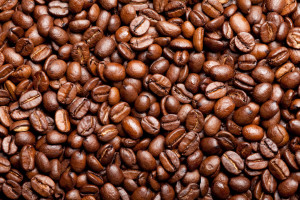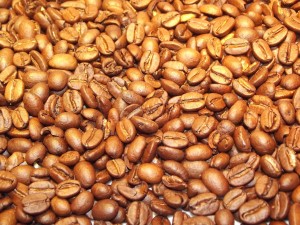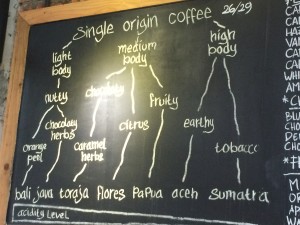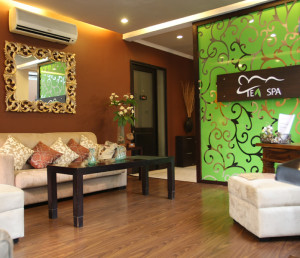After a long (though highly enjoyable!) month of traveling, I find it quite nice to be back in Jakarta, sitting in a coffee shop, and writing at long last! I am astounded at how the 6 hour time difference between Jakarta and Auckland is impacting me more than my typical 12+ hour experiences, so it seems appropriate that today’s post should be about coffee.
I caveat this post with the confession that I barely passed high school math or chemistry. (Many thanks to the patience and understanding of one Enrico Marchetti, then Beijing-based Scotch-Italian teacher extraordinaire!) But still I find the precision of proper coffee preparation fascinating (even though at times frustrating!)
My favorite thing about all of the teachers at ABCD — Hendri (Phat Uncle), Ve, and Izman (LatteArtBandit!)— is that they are truly driven by passion and a deep love for what they do. They gently direct, rather than correct, and make coffee both accessible and a wonderment. No one is too dumb, or too unsophisticated for this course. And that’s really saying something for a subject that is just as complex (if not more) than its frequently more standoffish cousin, wine appreciation.
I’m not going to give EVERYTHING away, because quite frankly, if you live in Jakarta or thereabouts, I strongly recommend this course. If I had three thumbs, I would gladly raise them all to ABCD. But I will happily debunk some common coffee myths in this post.
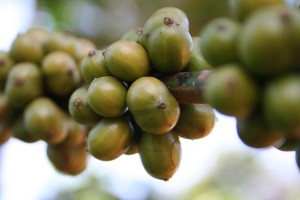 Myth 1: Arabica is always better than Robusta.
Myth 1: Arabica is always better than Robusta.
Wherever you fall in this debate, Hendri informs us that with global warming and other environmental factors affecting the productivity of coffee plantations, the world will increasingly become a Robusta place. (The ROBUST in Robusta is no coincidence. Robusta grows in more climates, is more resistant to pest infestation, and matures in a shorter time than its delicate sister.) There ARE high quality Robusta blends out there – just like there are crap Arabica ones. Robusta is frequently maligned because of its “harsher” flavor and occasionally “muddy” texture. In truth, it is increasingly it is becoming harder to tell the difference. And for you resident workaholics out there, know that Robusta contains two to three times more caffeine by weight than Arabica. Fun fact — if you want to differentiate the two different types of beans in a snap – look no further than bean and furrow shape. Arabica is oval and has an S-like furrow, while Robusta beans are round, with a straight furrow.
Myth 2: Coffee shelf life and storage – freezing makes coffee last longer
To freeze or not to freeze remains a frequent debate among us “normal” coffee drinkers. The most common wisdom is that freezing prolongs the shelf life. Many coffee aficionados – from Portland, OR to Brooklyn, NY have told me definitively NOT to do this, but Hendri was the only person who gave me a clear scientific explanation. First, freezing beans produces condensation, which affects both flavor and chemical makeup. Second, both the excess water (from condensation) and the hardness of the frozen bean will ultimately damage a good coffee grinder. The only way to store coffee? In a dark and airtight container in a cool and dry place. (Check out the AirScape container available here and at specialty stores). The optimum time for enjoying coffee? Within 10-14 days of roasting. Still tolerable? Within two months. Fully stale? Within a year. But drinking stale coffee, however unpleasant, is unlikely to make you sick.
Myth 3: Dark roast and light roast coffee have different levels of caffeine
- Dark or light? Take your pick!
Most beginning coffee drinkers (including me in my college years) begin with the belief that due to its stronger flavor and deeper color, dark roast coffee contains more caffeine. At the next level (me until three days ago!) we graduate to the belief that light roasts are more highly caffeinated because the caffeine is “roasted out” of dark roasts. But at ABCD, I learned that caffeine is actually a very stable molecule. (Scientific American explains the decaffeination process here.) Similarly while, espresso may have more caffeine by volume because of its concentrated nature, when imbibed “normally” (i.e., not 10 shots in a single sitting) it has the same amount of caffeine as a comparably “normal” cup of drip coffee.
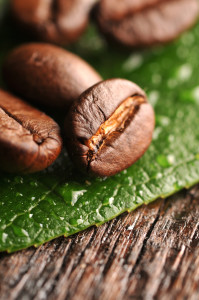 Myth 4: Shade-grown coffee beans absorb flavors from their accompanying shade trees.
Myth 4: Shade-grown coffee beans absorb flavors from their accompanying shade trees.
You will often hear coffee drinkers comment about the orange notes in Bali-grown coffee attributed to the orange trees that frequently shade coffee crops on this beautiful Indonesian island. But you would be hard pressed to find eucalyptus-tinged coffee – which is one of the most common shade trees used among other coffee growers in Indonesia. Flavor variations in coffee come from a number of factors, including altitude (coffees grown at higher altitudes tend to feature more sweetness and acidity), temperature, soil, etc. Roasting and storage also affect bean flavor. The most significant way that a shade tree ACTUALLY impacts the coffee it protects is how the two plants compete for resources — water, nutrients, etc.
Myth 5: There is only one proper way to brew coffee
It would be so easy to walk into the course assuming that all of the processes and procedures taught are the ONLY way to drink coffee. There were a couple of helpful guidelines though:
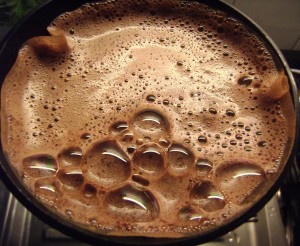
Agitation (swirling the water or gently stirring) is key to the drip coffee brewing process. The bubbles are gas being released from the grounds, while the oily top layer holds in the aroma.
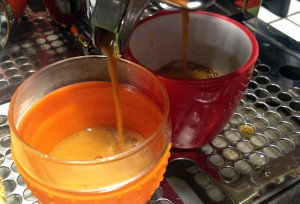
One of ABCD’s many professional espresso machines. In brewing espresso, balance and timing are key. (Photo shamelessly appropriated from the ABCD website. Many thanks Ve!)
Coffee to Water Ratio: 1:15 – for every gram of coffee, add 15 ml of water (so a full cup is something around 15g of coffee and 225 ml of water)
Ideal Brewing Temperature: Between 92-96 C (too high and your coffee will be bitter; too low and you will not extract enough flavor from the bean.)
Milk Storage: Under 5C. (Fun fact – every additional 3C reduces its shelf life by half.)
Milk Heating: Never heat over 72 C, and never reheat.
But let’s face it – the majority of us don’t have THAT much time to devote to making our morning cup of Joe, nor do we have the budget (or the counter space) to invest in high-end equipment. I really like the definition of coffee snob that Hendri provided on day one (read here). But when I sheepishly confessed that I owned a Nespresso machine back home and asked his opinion, he had this to say. “Is it as good as specialty coffee? No. But is it better than pretty much any other one button solution in the market? Absolutely. For people with limited time, this is a perfectly good machine.” He added “Coffee appreciation is a process. If people move from instant to fresh ground, from pod based drip coffee to properly pressurized machines like Nespresso, it’s all progress. And that’s a good thing.”
ABCD also emphasizes that coffee appreciation is about experimentation. Volume of grounds, grind size, keeping or tossing the first few drops of your drip coffee (which tends to be the most acidic – good if you like this flavor, less so if you don’t!) – all are a very personal choice. So while the above formulas are general best practice guidelines, they are not a rule set in stone.
On I lighter note, I will end today’s post by sharing some wisdom from Mrs. Hughes, my 11th Grade IB English teacher. A cup of coffee will not make you any less intoxicated – it will simply make you an “awake drunk.” So appreciate a cup of specialty coffee when you’re fully sober – and stay with water while drinking!







